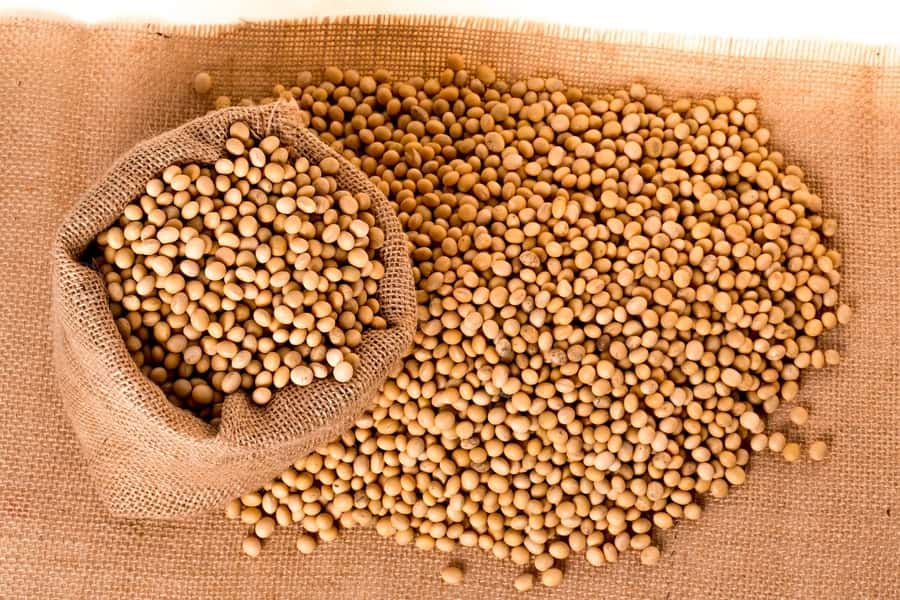The planting of the new Brazilian soybean crop had a week of slower progress between December 10 and 16. The lack of rain in the states of Rio Grande do Sul and Santa Catarina discouraged growers from moving forward, given the low soil moisture accumulated for the last two weeks. The other producing states in the country are approaching the last areas to be sown, while most states in the Midwest and Southeast have already finished work.
According to research carried out by SAFRAS & Mercado, until December 16, Brazilian growers sowed 96.6% of the total area expected for the country in the 2022/23 crop. The percentage is equivalent to approximately 42.247 mln hectares sown, out of a total of 43.739 mln hectares estimated for planting. In the previous week, the percentage was 94.7%. In the same period last year, the percentage reached 97.5%, while the five-year average for the period is 97.2%.
In Rio Grande do Sul, out of a total area estimated at 6.55 mln hectares, 86% were sown, or approximately 5.633 mln hectares. In the previous week, the percentage was 82%. In the same period last year, the percentage was 91%, while the five-year average for the period is 93.6%.
In Paraná, 100% of the area destined for soybeans were sown, out of a total of 5.75 mln hectares estimated for the state. In the previous week, the percentage was 99%. In the same period last year, the percentage reached 100%, while the five-year average is 100% for the period.
In Mato Grosso, out of a total expected area of 11.8 mln hectares, 100% are already sown. In the previous week, the percentage was 100%. In the same period last year, the percentage was 100%. The five-year average for the period is 100%.
In Mato Grosso do Sul, the planting is 100% complete of an estimated total area of 4.039 mln hectares. In the previous week, the percentage was 100%. In the same period last year, the percentage was 100%. The five-year average for the period is 100%.
In Goiás, out of a total expected area of 4.45 mln hectares, 99% were sown, equivalent to 4.406 mln hectares. In the previous week, the percentage was 99%. In the same period last year, the percentage was also 100%, while the five-year average for the period is 100%.
In São Paulo, out of a total area estimated at 1.35 mln hectares, 98% were sown, or approximately 1.323 mln hectares. Last week, the percentage was 95%. In the same period last year, the percentage was 100%, while the five-year average for the period is 100%.
In Minas Gerais, out of an expected total area of 2.1 mln hectares, 100% were sown. In the previous week, the percentage was 99%. In the same period last year, the percentage was 100%, while the five-year average for the period is 100%.
In Bahia, out of an estimated area of 1.9 mln hectares, 99% were sown, or the equivalent of 1.881 mln hectares. In the previous week, the percentage was 98%. In the same period last year, the percentage was 97%, while the five-year average for the period is 99%.
In Santa Catarina, out of a total area estimated at 780 thousand hectares, 90% were sown, or the equivalent of approximately 702 thousand hectares. In the previous week, the percentage was 85%. In the same period last year, the percentage was 99%, while the five-year average for the period is 99.4%.
The climate forecasts point to a period of little or no moisture in the states of the Southern Region between December 17 and 23, which must continue to impede a better advance of the planting in Santa Catarina and Rio Grande do Sul. The other regions of the country must receive rain, with large accumulations being expected for the North and Northeast regions and the states of Mato Grosso, Goiás, and Minas Gerais.
In the period between December 24 and 30, moisture must remain low in the South Region. The other states must continue to receive precipitation, with large accumulations forecast again for the North and Northeast regions, besides the states of Mato Grosso and Goiás.
The trend of little or no moisture over Rio Grande do Sul and Santa Catarina in the last two weeks of the year is worrying. If the rains do not arrive in January, there may be significant crop failure.

